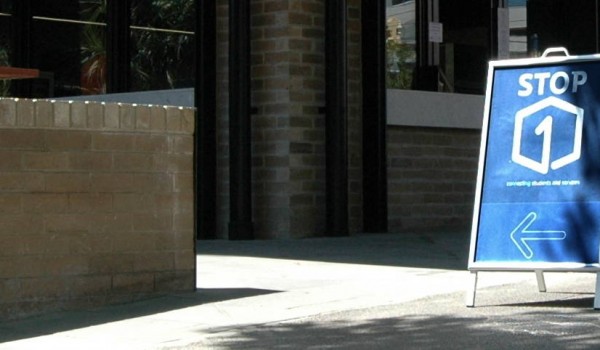Uni starts off with Stop 1

The start of semester has brought a new cohort of students, and with it, the University has taken the risky step of merging all student centres into Stop 1, a single point of contact for students, located on the south-eastern corner of campus.
Previously, students went to faculty-specific student centres for help with student cards, fees, enrolment, course planning, and all forms of administrative assistance. Now, every student from every faculty will need to visit Stop 1, which has also taken on responsibility for referral to specialised services including academic skills, disability services, and financial & housing aid.
The University claims that a single student centre will allow it to save money and deliver a more uniform experience for students. It coincides with the University pushing for students to resolve issues themselves using online tools through my.unimelb; and an expansion in responsibilities of the 13 MELB main contact number to “resolve and not transfer” enquiries.
Students have expressed concern that the move to Stop 1 was driven entirely by cost-cutting, will be dogged by long wait times, and that a generic student centre will lose specialist, course-specific knowledge.
So far, some of this has been borne out: there have been long wait times for callers to 13 MELB, but a visit to Stop 1 itself showed the physical student centre is coping. However, the true test will be over the next three weeks leading into the start of semester, the peak time for University administrative services.
The name “Stop 1” is a reference to stop one on the Melbourne tram network, which is the main Swanston St tram stop for the University. The name and logo were voted for by students in
late 2015.
Stop 1 is not the University’s first attempt at centralising student services. In 2008, to coincide with the introduction of the Melbourne Model, the University combined discipline specific student centres into faculty-based student centres, one for each of the six New Generation degrees.
In 2010, the University went further, merging Science, Biomedicine and Engineering into the purpose-built Eastern Precinct Student Centre, which was sold as having many of the benefits the University claims Stop 1 will bring. The Centre was disestablished two years after it was created, calling into question the University’s capability toimprove on its previously failed endeavour.
Whether Stop 1 is a success, time will tell.